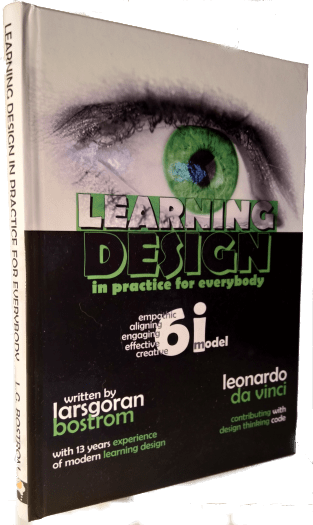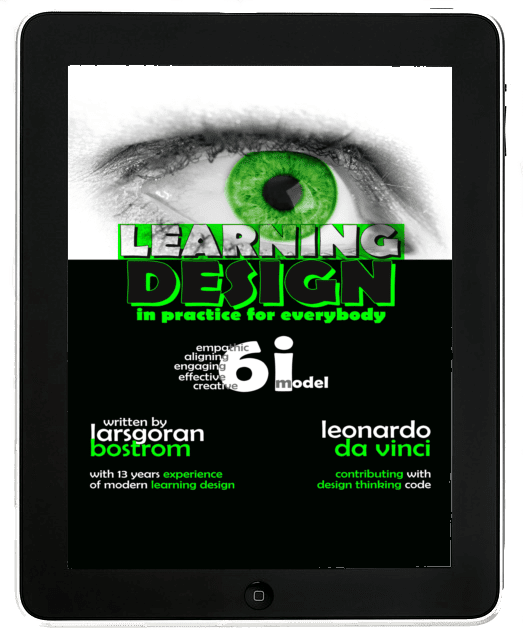Listen to the story
“In a growth mindset, people believe that their most basic abilities can be developed through dedication and hard work – brains and talent are just the starting point,” she said. “This view creates a love of learning and a resilience that is essential for great accomplishment.”
 In an organisation, the key aspects that relate to having a growth mindset include, among others, fostering new approaches to learning, rethinking how people accept failure, developing talent, giving and receiving feedback, and coping with challenges and how we perceive the success of others. This article will examine how design thinking augurs well for organisations that promote a growth mindset.
In an organisation, the key aspects that relate to having a growth mindset include, among others, fostering new approaches to learning, rethinking how people accept failure, developing talent, giving and receiving feedback, and coping with challenges and how we perceive the success of others. This article will examine how design thinking augurs well for organisations that promote a growth mindset.
Global design firm Ideo defines design thinking as:
“having a human-centred core; it encourages organisations to focus on the people they’re creating for, which leads to better products, services, and internal processes.”
Design thinking, at its core, relates to solving human-centred issues through human-centred designs – i.e. problem-solving in a systematic manner to address issues faced by society in general. The inherent ideas and ideals beneath design thinking are not necessarily new. Nevertheless, design thinking presents a systematic way of injecting creativity and innovative thinking in any company using specific tools and techniques in a simplified manner. When implemented and used well, design thinking can promote a growth mindset culture in organisations. The design school at Stanford University prescribes a five-step design thinking process: empathy, define, ideation, prototyping and testing.
Empathy
The first step and arguably the most vital one in design thinking is empathy. Empathy focuses on having a deep understanding of clients or customer pain points and emotional attachment to a given problem or challenge often called “design challenge”. Empathy involves key activities such as interviewing existing or potential clients to learn about a specific issue related to them. Focus group sessions are often conducted to understand our stakeholders better. Through empathy, a growth mindset can be fostered among employees. Empathy teaches us to sharpen our listening skills and deepens our sense of appreciation for what others have to say. Empathising with others also enhances our ability to discover both emotional and physical pain points of others in relation to the challenges they face. Empathy changes how we learn about others and enables us to reflect on challenges from the perspectives of others. Empathy also improves our ability to receive feedback constructively.
Define
The second step in design thinking is called define. Define focuses on getting deeper into the problem from the viewpoint of the customer. Design thinkers spend time coming up with specific perspectives and offer game-changing propositions to the problem based on insights or hunches. Typically, the define stage allows design thinkers to develop viewpoints about the challenges people face, using a toolkit called point of view. This is the stage where we can learn more about people and their issues based on observation. Design thinkers then form inferences based on these observations and develop game-changing statements that are used to guide solutions to problems. In relation to fostering a growth mindset, the define phase in design thinking resonates with empowering people to approach learning about others in a more systematic manner. Stated differently, this step allows us to learn more about people, the issues they face, and how to convert challenges into opportunities to develop unique solutions.
Ideation
Ideation, the third step, refers to the stage where design thinkers try and generate as many ideas as possible to address the problem defined. Ideation is akin to a brainstorming session where ideas are seamlessly generated. The game-changing statements developed during the define stage are converted into as many ideas as possible using brainstorming techniques. These ideas are then presented to other teams, and refined and positioned as possible solutions in each challenge. Ideation allows people and organisations to move away from problems to a solution-focused orientation. It involves thinking out of the box. Ideation promotes a growth mindset as teams teach teams, and work towards a winning idea based on constructive feedback. The growth mindset dimensions mapped to ideation include, among others, talent development, a new approach to learning from others, coping with challenges in a solution mode, and celebrating the success of innovative ideas across teams.
Prototyping
Prototyping focuses on translating ideas into practical manifestations. A prototype is not confined to having a tangible product but could also refer to simulations, mock-ups or even campaigns, depending on the challenge people or organisations face. Prototyping fosters a growth mindset as during this stage, people are trained to work on developing practical solutions given limited resources. Prototyping also teaches employees and the organisation in general to prioritise implementation plans. Like the ideation stage, prototyping can harness solution-based thinking, teach employees to cope with constraints, and cultivate cross-functional learning.
Testing
The final step – testing – stresses the importance of pitching a prototype to identified target groups. The prototype is then often reworked accordingly based on feedback until deemed fit for market or organisational launch. Testing fosters a growth mindset in several ways. It allows prototypes or projects to fail in-house. The team is encouraged to reflect on comments from others to improve, using the “teams teaching teams” approach. The growth mindset dimensions addressed in this step include coping with failure, receiving and giving constructive feedback, and fostering new forms of learning.
I continue to use design thinking in different settings. As a father, it reminds me to see the world from the lens of my two digital natives. As a professor, it allows me to empathise with my colleagues and students. As a social worker, it allows me to understand society better.
Written by
Prof Dr Murali Raman
Postgraduate and continuous education director at Asia Pacific University of Technology and Innovation (APU), focusing on executive training and consultancy. His niche training areas include design thinking, coloured brain communication and emotional drivers, digital economy, crafting digital strategies, and mindset change. The views expressed here are the writer’s own.
More about grow through design thinking put in practice


Click to learn more about the book
It is available as eBooks: Google Play Books | Bokon | Dito | Bokus | Adlibris | Buy directly from us in BiQStore
Buy the printed version directly from us in BiQstore – Buy now, pay later with Klarna or pay with PayPal – more in BiQStore
Opens in a new tab



